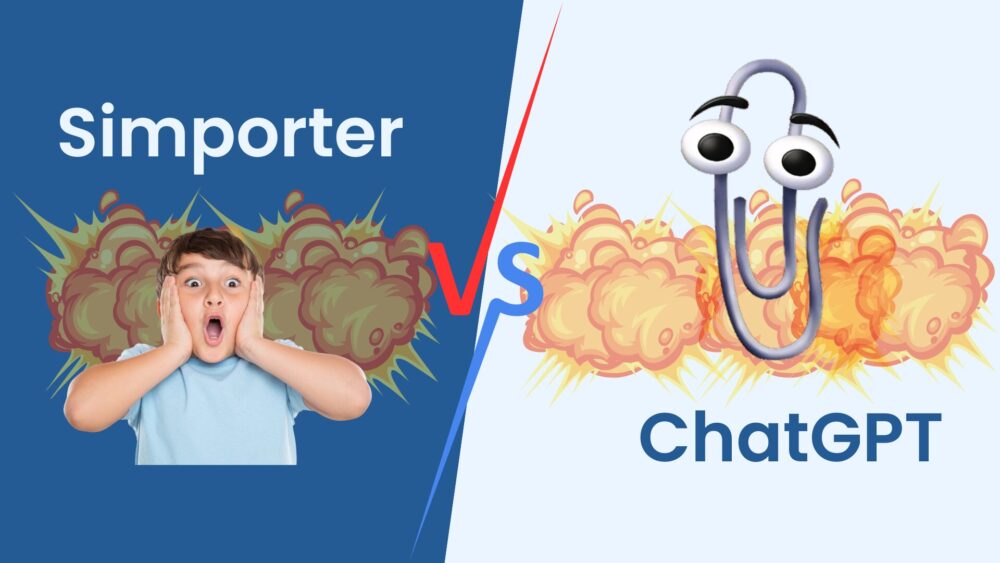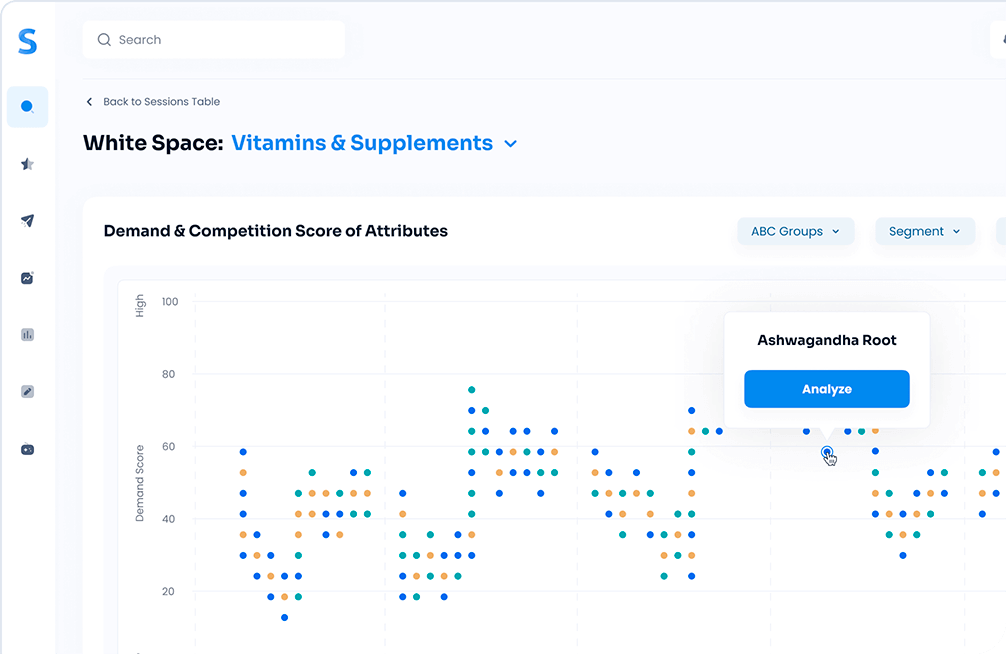Understanding consumer preferences before launching a new product is vital for success. The market today is full of variables, and ensuring your concept resonates with target audiences can save time and money. That’s where consumer panels come in, offering an efficient and insightful way to test your product ideas and strategies.
What Is a Consumer Panel?
A consumer panel is a group of selected individuals who provide feedback on products or services. These panels are composed of people who represent your target market, ensuring that the insights gathered are highly relevant. Businesses utilize consumer panels to explore preferences, evaluate product concepts, and even assess the likely success of a marketing campaign.
For instance, consider running a concept development survey. It helps gather valuable input on design, pricing, and features, which can be pivotal for fine-tuning your product before a full-scale launch. Concept surveys are increasingly used by leading companies to validate ideas in a competitive landscape.
Why Use Consumer Panels for New Product Surveys?
- Gain Direct Consumer Feedback
Consumer panels allow businesses to receive immediate feedback from real people who represent their target demographics. This feedback can clarify what potential customers like or dislike about a product and reveal preferences that might not have been obvious during the development stage. Panels can also highlight pain points that competitors are not addressing, giving your product a unique angle. - Identify Market Trends
Staying ahead of the curve in recognizing consumer trends is crucial. Consumer panels offer a way to track changing preferences and adapt accordingly. For instance, if you are trying to understand how sustainability influences buying behavior, a consumer panel can provide real-time insights. This data can guide your marketing strategy and help position your product to meet evolving consumer expectations. You can learn more about emerging consumer trends here. - Reduce Risk Before Launch
The insights derived from consumer panels help companies fine-tune their product concepts before committing significant resources. Testing your product with a focused consumer panel can identify issues that may not be apparent internally. This step acts as a safeguard, reducing the risk of a costly product flop. The value of this approach is clear when you consider the time and capital saved. - Achieve Competitive Advantage
In markets saturated with options, knowing what your consumers want can give you an edge. Businesses that utilize consumer panels to tailor products have a higher chance of staying ahead of competitors. For example, conducting a shelf test could reveal how well your product stands out compared to others on the market. Understanding these dynamics helps refine marketing messages and packaging to boost visibility and sales. Curious about how to make your product more appealing on the shelf? Check out our complete guide on shelf testing here.
How to Conduct a Concept Survey Using Consumer Panels
- Define Your Objectives
Before conducting any survey, it’s essential to have a clear understanding of what you want to achieve. Are you testing a new product flavor, a packaging design, or a promotional campaign? Defining your objectives will help you design questions that are both relevant and actionable. The better your focus, the more valuable the insights will be. - Select a Representative Panel
Choose your panel carefully to ensure it accurately reflects your target audience. For example, if your product is geared toward health-conscious millennials, make sure your panel includes individuals from this demographic. A well-selected panel can yield more precise and actionable insights, helping you refine your product development process. - Design the Survey Questions
Craft your questions to be concise and specific. Use a mix of question types, such as multiple-choice, rating scales, and open-ended questions, to gather a diverse set of insights. Avoid leading questions that might bias the responses. For example, instead of asking, “How much do you love this product?” opt for a neutral query like, “What do you think about this product?”You can also benefit from tools designed to maximize survey engagement and effectiveness. For a deeper dive into how to create powerful consumer insight surveys, explore this resource. - Distribute Your Survey Efficiently
Use digital platforms to distribute your survey and reach panel members quickly. Technology has made it easier than ever to gather feedback from diverse groups in a short amount of time. Consider using platforms that automate data collection and analysis, allowing for faster, more actionable insights. - Analyze the Results
Once your data comes in, dive into the analysis. Identify patterns, contradictions, and areas of consensus. These findings will serve as the foundation for making informed decisions about your product. Be sure to interpret the data objectively, and where possible, quantify the feedback to support your conclusions.
Best Practices for Concept Surveys
- Keep It Simple: Avoid jargon or complicated language that could confuse respondents.
- Focus on Specific Aspects: Narrow down the survey to the core elements you want to test.
- Mix Question Types: Combining multiple-choice with open-ended questions will give you both quantitative and qualitative data.
- Ensure Anonymity: Anonymity encourages more honest and accurate feedback, especially when discussing product shortcomings.
Challenges and Considerations
- Selection Bias
One challenge of consumer panels is ensuring that the participants truly represent your target market. If your panel is too narrow, the feedback may not be relevant on a larger scale. To mitigate this, use screening criteria to select a diverse and representative sample. - Survey Fatigue
Respondents are more likely to provide thoughtful answers if your survey is concise. Long or complicated surveys can lead to fatigue, causing participants to rush through or skip questions entirely. Limiting the survey length and maintaining engaging content will keep your panel interested. - Data Interpretation
Misinterpreting survey results is a common pitfall. Avoid making assumptions based on a small subset of data, and instead, look for broader trends. Cross-referencing consumer feedback with sales data or industry reports can give a more comprehensive view of potential outcomes. Want to dig deeper into data-driven approaches to concept development? Our guide on concept development explains more here.
How Simporter Enhances the Process
Consumer panels are just one piece of the puzzle. Leveraging platforms that specialize in predictive analytics and consumer insights, such as Simporter, can elevate your product research. Simporter offers tools to simplify and optimize the way you gather and analyze consumer feedback, ensuring that you can make data-backed decisions efficiently. Moreover, by integrating online consumer panels and shelf tests into your strategy, you can further reduce the risk of a failed product launch and secure your position in the market.
For companies serious about innovation, these insights are invaluable. Check out our list of top innovation consulting firms here to see how leading brands approach market research and product testing.
How to Leverage Consumer Panels for Product Success
So far, we’ve established the role of consumer panels in collecting direct and relevant feedback for your product concepts. But how can you maximize the effectiveness of this tool to truly understand your market and ensure success? Here’s a detailed look at how to execute this strategy to its fullest potential.
The Mechanics of Consumer Panels
To gain actionable insights from consumer panels, you need to have a well-planned approach that accounts for different stages of product development. Each stage has its unique set of objectives, and consumer panels can help you address critical questions that will shape your product’s evolution.
1. Pre-Launch Concept Testing
Identify Gaps and Opportunities:
Before finalizing your product concept, use consumer panels to understand what features or elements your target audience finds appealing—or off-putting. For instance, if you’re launching a new snack product, a consumer panel can help determine if your flavor options align with current taste trends. Notably, you can compare your potential product offerings with data from shelf tests. Curious about how this works? Check out our guide on the best shelf testing suppliers here.
Assess Market Fit:
A well-conducted consumer panel can reveal whether your product meets a genuine market need or if you need to pivot your strategy. Use this feedback to refine your concept and ensure that you are offering something consumers will want to buy. By evaluating your product’s appeal alongside consumer preferences, you’ll gain confidence that your launch will resonate with your audience.
2. Fine-Tuning the Product Features
Iterate Based on Feedback:
Product development doesn’t end with a concept. As you move closer to launch, consumer panels can be used to fine-tune features. Whether it’s the material of a new wearable tech product or the fragrance of a cleaning solution, panels provide real-world reactions that can be extremely valuable. Instead of relying on internal teams to predict consumer reactions, consumer panels offer a more unbiased view.
Refine Messaging and Branding:
Even the best product can fall short if it’s marketed ineffectively. Use consumer panels to test your branding, slogans, and key messages. The insights can reveal whether your marketing efforts are clear and engaging or need to be adjusted. If you’re promoting a sustainable product, for example, consumer feedback can show if your eco-friendly message resonates or needs tweaking.
Looking for inspiration on how to craft compelling branding and marketing messages? Learn more in our article on consumer insights and their impact on marketing strategy here.
3. Post-Launch Assessment
Measure Product Satisfaction:
Once your product is out in the market, consumer panels can help you evaluate its performance. Feedback collected post-launch can provide insights into what works well and what could be improved for future iterations. For example, if you notice a recurring complaint about packaging convenience, you can address this in your next product update.
Track Market Trends:
Consumer preferences aren’t static—they evolve over time. Continually engaging with panels helps you stay up-to-date with shifting market dynamics, allowing you to adapt quickly. This is especially crucial in rapidly changing industries like tech or fashion. Want to stay ahead of trends in your sector? We have a comprehensive guide on consumer trends here.
Integrating Consumer Panels with Other Tools
While consumer panels provide valuable qualitative data, you can gain a more complete understanding by combining these insights with other market research tools. Simporter offers solutions that seamlessly integrate various research methods, making it easier to interpret consumer feedback in the context of broader market data.
Advanced Data Analytics
Simporter’s platform uses predictive analytics to give you a head start in understanding market potential. By analyzing historical sales data, social media trends, and consumer panel feedback, you can make data-backed decisions with confidence. This holistic approach allows you to understand not just what consumers are saying but why they feel that way.
Concept and Shelf Testing Synergy
Consumer panels are ideal for concept testing, but when paired with shelf tests, they provide a more rounded view of your product’s potential. Shelf tests can reveal how well your product captures consumer attention in a retail setting, offering additional insights that consumer panels alone may not cover. This synergy between online and in-store testing can make your product launch even more successful. Interested in learning more about conducting an effective shelf test? We cover everything you need to know here.
Practical Applications and Case Studies
Case Study: The Impact of Consumer Panels on a Beverage Launch
Imagine a company preparing to launch a new energy drink. Before the release, the company uses consumer panels to test various aspects of the product, such as flavor, branding, and packaging. Here’s what they discover:
- Flavor Preference: The initial options included exotic flavors like dragon fruit and traditional ones like citrus. The consumer panel overwhelmingly favored the citrus flavor, citing familiarity and a more appealing taste profile.
- Branding Insights: The brand initially planned to market the drink as “invigorating” but found that the term didn’t resonate with the target audience. Instead, panel members preferred the descriptor “refreshing.”
- Packaging Feedback: While the company’s internal team believed that a sleek, minimalist design would work best, the panel suggested adding more vibrant colors to catch shoppers’ eyes on crowded store shelves.
Armed with this feedback, the company revised its product features and marketing strategies. When the drink launched, it sold out in multiple locations within weeks, validating the power of consumer panels to guide successful product development.
Case Study: A Cleaning Product That Needed a Fragrance Makeover
In another example, a household cleaning brand was testing a new line of eco-friendly sprays. The product performed well in terms of effectiveness, but consumer panels were less enthusiastic about the fragrance. The feedback indicated that the scent reminded users of medicine rather than a clean, fresh home. The brand took this criticism seriously and reformulated the product to include more appealing, natural fragrances like lavender and eucalyptus. Sales improved significantly post-launch, demonstrating how essential consumer feedback can be.
Future Trends in Consumer Panels
Consumer panels are evolving, with technology playing a significant role in making them more efficient and accurate. Artificial intelligence and machine learning are being used to analyze consumer behavior, providing deeper insights faster than ever before. These advancements allow companies to adapt quickly, staying ahead of the competition in an increasingly dynamic market.
For example, AI-driven platforms can automate data analysis from consumer panels, making it easier to spot trends and identify actionable insights. As a result, companies can react to market demands almost in real time, a capability that’s becoming essential in today’s fast-paced business environment. Curious about the latest AI tools for market research? Check out our roundup of the best AI market research tools and agencies here.
Advanced Strategies for Using Consumer Panels
Having a strong understanding of consumer panels and their role in product development is essential, but to truly leverage their potential, it’s important to delve deeper into more sophisticated strategies. Here, we’ll cover the advanced methods you can implement to maximize the effectiveness of consumer panels for your business.
Using Consumer Panels for Continuous Improvement
Consumer panels aren’t just useful for one-off product tests. When integrated into a continuous feedback loop, they can become a permanent part of your innovation process, helping you to adapt and improve your offerings in real time.
1. Create a Consumer Advisory Board
One effective method is to establish a Consumer Advisory Board, composed of your most loyal or influential panel members. This board can provide ongoing feedback on everything from product iterations to marketing campaigns. Members of this advisory board feel a sense of ownership over your brand, which often results in more thoughtful and detailed feedback.
Benefits of a Consumer Advisory Board:
- Deeper Engagement: Advisory board members are more invested and willing to participate in multiple rounds of feedback.
- Focused Insights: A smaller, dedicated group provides insights that are more specific and actionable.
- Brand Advocacy: These engaged panelists are more likely to become brand ambassadors, promoting your products through word-of-mouth.
Integrating Consumer Panels with AI and Machine Learning
The use of AI and machine learning is transforming how consumer panels operate. Predictive algorithms can analyze feedback in real time, spotting patterns and trends that would be difficult for human analysts to identify. This technology not only saves time but also provides more accurate and actionable insights.
How AI Enhances Consumer Panels
- Automated Sentiment Analysis: AI can automatically gauge the emotional tone of feedback, helping you understand how consumers feel about your product.
- Trend Prediction: Machine learning algorithms can analyze historical data to predict future consumer trends, giving you a head start in product planning.
- Customized Surveys: AI can personalize survey questions based on previous responses, increasing the relevance of each question and improving data quality.
Case Study: How AI Transformed Concept Testing
Consider a beauty brand that wanted to launch a new skincare line. By using an AI-enhanced consumer panel, the brand quickly discovered that certain ingredients were perceived as more effective, even though these ingredients weren’t the most scientifically proven. Armed with this insight, the company adjusted its marketing to emphasize these popular ingredients, leading to a highly successful launch.
The key takeaway? Combining AI with consumer panels allows brands to adapt their strategies quickly, turning consumer perceptions into a strategic advantage. To explore more ways AI can revolutionize your product testing, visit our article on AI-driven market research here.
Tracking Long-Term Consumer Sentiment
Another advanced strategy is to monitor how consumer sentiment evolves over time. This approach is particularly useful for products that have a long buying cycle, such as electronics or home appliances. By tracking sentiment over several months or even years, you can gain insights into how consumer attitudes change and what factors influence these shifts.
How to Track Long-Term Sentiment:
- Use Panelist Profiles: Keep detailed records of panelist demographics and previous responses to track shifts in opinions.
- Analyze External Factors: Consider how external events, like economic shifts or industry trends, impact consumer sentiment.
- Adjust Marketing Strategies: Use long-term sentiment data to inform your marketing campaigns, ensuring they stay relevant and engaging.
Overcoming Common Challenges
Working with consumer panels can be incredibly rewarding, but it’s not without its challenges. Here are some common obstacles and how to overcome them:
- Low Engagement Rates: Panel members may lose interest if surveys are too long or repetitive. To combat this, keep surveys concise and engaging. Use a mix of question types to maintain interest and offer small incentives to encourage participation.
- Data Quality Issues: Sometimes, panel members may not provide thoughtful or honest feedback. Using AI to detect inconsistencies or rushed answers can help improve data quality. Additionally, focus on panel selection to ensure a diverse and representative sample.
- Panel Fatigue: If your panel members participate in too many surveys in a short time, they can become fatigued, leading to less accurate data. Rotate your panel members regularly and give them breaks between surveys to keep them engaged.
Ethical Considerations in Using Consumer Panels
When using consumer panels, it’s important to be transparent about how data will be used and to respect the privacy of your panelists. This builds trust and ensures that your research practices align with ethical standards.
Key Ethical Practices:
- Informed Consent: Always inform panel members about what their data will be used for and obtain their explicit consent.
- Data Anonymization: Where possible, anonymize data to protect the identities of your panel members.
- Fair Compensation: Offer fair compensation for the time and effort panel members put into providing feedback.
Future Outlook: The Evolution of Consumer Panels
The landscape of consumer research is constantly evolving. As technology continues to advance, consumer panels will become even more integrated with other data sources, like social media analytics and real-time sales data. Businesses that stay ahead of these trends will be better positioned to respond to consumer needs quickly and effectively.
Emerging Trends to Watch:
- Virtual and Augmented Reality Panels: Companies are starting to use VR and AR to create more immersive product testing experiences.
- Blockchain for Data Security: Blockchain technology is being explored as a way to ensure the integrity and security of consumer panel data.
- Voice-Activated Surveys: With the rise of voice assistants, voice-activated surveys are becoming a new way to collect consumer insights.
How Simporter Can Help
At Simporter, we understand the complexities of consumer research. Our platform uses cutting-edge AI technology to simplify the process of gathering and analyzing consumer feedback. From concept testing to shelf tests, Simporter provides the tools you need to make data-driven decisions efficiently.
Ready to see how Simporter can revolutionize your product development process? Schedule a demo today and discover the future of consumer insights.









